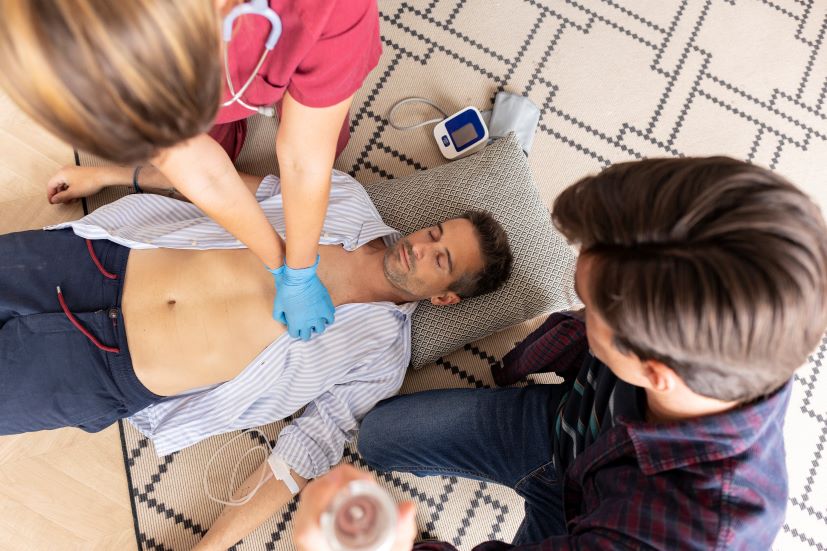Introduction
Every year, countless lives are shed as a result of sinking events. While prevention is the very best method, knowing just how to carry out CPR for sinking sufferers can substantially enhance the possibilities of survival. In minutes when every second counts, having the right knowledge and skills might mean the distinction in between first aid courses in sydney life and fatality. This thorough overview will certainly walk you through every little thing you need to understand about mouth-to-mouth resuscitation for drowning sufferers, including techniques, standards, and vital sources.
CPR for Drowning Sufferers: What You Required to Know to Save a Life
When faced with a drowning victim, the proper application of mouth-to-mouth resuscitation can be lifesaving. Below's what you require to know:
Understanding Drowning: Drowning takes place when an individual is not able to take a breath because of submersion in water. The body can only make it through a couple of minutes without oxygen before brain damage or fatality occurs.
Signs of Drowning: Recognizing the indicators can aid you react quickly. Seek:
- Unconsciousness Lack of breathing Blue-tinged skin (cyanosis) Weak or no pulse
Immediate Actions: Call emergency situation services promptly if someone is suspected of sinking. Time is critical.
Assessing Responsiveness: If it's safe, approach the target and look for responsiveness by carefully trembling their shoulders while calling out their name.
Positioning: Carefully remove them from the water ideally, placing them on a flat surface.
Starting CPR: Begin mouth-to-mouth resuscitation immediately if they are less competent and not breathing normally.

The Relevance of CPR in Drowning Cases
Drowning sufferers frequently deal with hypoxia (absence of oxygen), making it vital that very early intervention happens through reliable rescue breaths and chest compressions.
How Does mouth-to-mouth resuscitation Work?
CPR jobs by manually preserving blood circulation and oxygenation till specialist help gets here or up until the sufferer begins breathing independently again.
Key Parts of Effective CPR
- Chest Compressions: Deliver strong compressions at a rate of 100-120 per minute. Rescue Breaths: After every 30 compressions, provide 2 rescue breaths.
Correct Methods for Carrying out CPR on Drowning Victims
Compression Deepness and Rate
One typical error is inaccurate compression depth. For adults, compressions need to go to the very least 2 inches deep yet no more than 2.4 inches.
Infant CPR Technique
For infants under one years of age, use two fingers in the facility of their breast and compress regarding 1.5 inches deep at a price of 100-120 per minute.
Age-Specific Guidelines
Different age groups require different techniques; understanding these subtleties can dramatically enhance outcomes in emergencies.
|Age Group|Compression Depth|Rate|| ----------------------|------------------|----------------|| Grown-up|At least 2 inches|100-120/ minutes|| Child (1-8 years)|Concerning 2 inches|100-120/ minutes|| Infant (under 1 year)|Around 1.5 inches|100-120/ min|
Combining mouth-to-mouth resuscitation with AED Usage
What is an AED?
An Automated External Defibrillator (AED) is a mobile tool that checks heart rhythm and can provide an electric shock if necessary.
How to Utilize an AED with CPR?
Turn on the AED. Follow voice prompts. Place pads as shown on the device. Ensure no one is touching the victim throughout shock delivery. Continue with CPR after shock delivery or if no shock is advised.Household Preparedness for Emergencies
Creating a house plan makes sure everybody understands what steps to absorb situation of emergencies like sinking cases:
Designate someone that will call emergency services. Ensure all member of the family recognize basic emergency treatment techniques. Keep emergency contact numbers accessible.
Workplace Emergency Plans
Just like home readiness, offices should have emergency situation plans that include emergency treatment training sessions and simple access to first aid sets and AEDs.
Local Resources for Understanding Mouth-to-mouth Resuscitation Skills
To properly react throughout emergency situations, consider enrolling in neighborhood CPR courses:
Finding Local CPR Classes
Check recreation center, hospitals, or organizations like the Red Cross for accreditation programs customized to your needs:

- Online courses Hands-on workshops Specialized courses for healthcare providers
CPR Qualification Requirements Australia
In Australia, various organizations use accreditations with certain needs based upon your function:
Basic First Aid-- Appropriate for general public. Advanced Resuscitation Abilities-- Needed for health care professionals. Age-specific certifications-- Customized training courses are readily available based upon age focus (infants vs grownups).Online Accreditation Choices in Australia
Many reliable companies offer on the internet accreditation alternatives:
- Flexibility to discover at your own pace Courses include videos demonstrating techniques Certificates supplied upon completion
Latest Guidelines for Carrying out CPR in Australia
Staying updated with the latest standards guarantees you are furnished with present practices advised by health and wellness authorities:
Review standards from organizations like Australian Resuscitation Council (ARC). Attend refresher courses routinely every few years. Stay notified about modifications in methods such as compression rates or use of AEDs.Statistics on mouth-to-mouth resuscitation Success Rates in Australia
Understanding stats aids highlight the significance of instant action during cardiac events:
|Event Kind|Survival Price|| -----------------------------|---------------|| Out-of-hospital arrests|~ 10%|| With prompt onlooker CPR|~ 30%|

These figures highlight exactly how prompt treatment significantly boosts survival rates!
FAQs About mouth-to-mouth resuscitation for Drowning Victims
Q1: The length of time need to I carry out CPR before stopping?
You should proceed carrying out mouth-to-mouth resuscitation up until emergency services get here or until an AED appears unless you observe Visit the website clear signs of life.
Q2: What if I'm uncertain regarding giving rescue breaths?
If you're not trained or feel uncomfortable offering rescue breaths, emphasis exclusively on breast compressions up until assistance shows up; hands-only mouth-to-mouth resuscitation has actually been shown effective!
Q3: Can I trigger harm while carrying out CPR?
While incorrect technique may trigger injury such as broken ribs, it's far better than doing nothing in all because survival chances substantially decrease without intervention!
Q4: How do I know if I'm making use of correct compression depth?
A common guideline is that adult compressions should sink at least two inches right into their upper body; method making use of manikins helps obtain confidence!
Q5: Is there any kind of age restriction for learning CPR?
No! Any person can find out fundamental life-saving strategies no matter age; several organizations customize programs particularly in the direction of kids teaching them important abilities early!
Q6: Do I need unique devices to perform effective rescue breathing?
You don't necessarily need devices! Nevertheless having barrier gadgets helps reduce condition transmission risk throughout mouth-to-mouth ventilation while still making certain reliable air flow reaches lungs!
Conclusion
Mastering "CPR for Drowning Victims" gears up individuals with important skills that might save lives first aid courses in adelaide throughout crucial situations! By recognizing appropriate strategies combined with keeping house preparedness strategies-- you foster an environment where safety and security thrives! Keep in mind-- the very best method forward involves consistent education through regional courses & & certification chances alongside normal practice sessions making certain self-confidence rollovers right into real-world circumstances! Be proactive today-- join a class near you & & equip yourself against unforeseen emergency situations tomorrow!